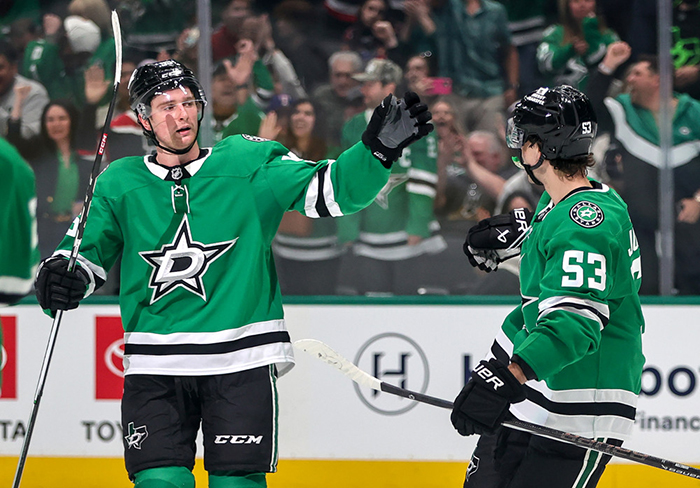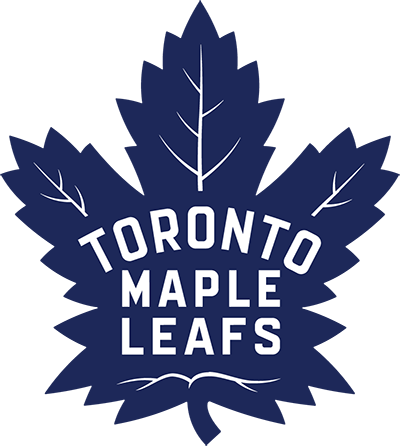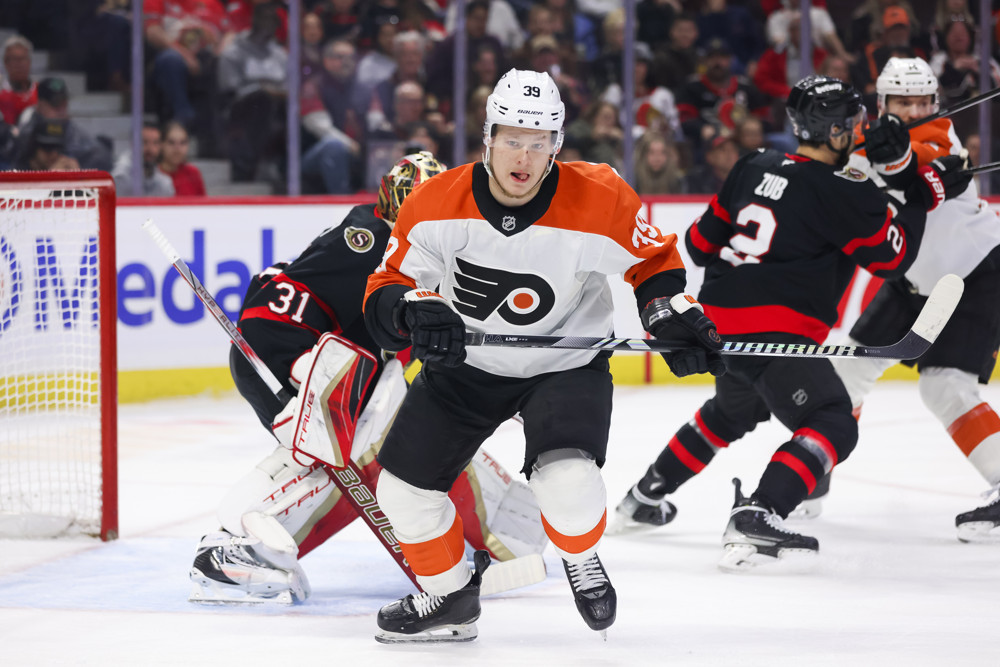The NHL season is still only a few games or two weeks old. Some teams have looked great, yet it’s hard to say whether they’ll be in the Cup conversation down the road. On the flip side, the saying goes that a team can’t win a title in the first month but can certainly lose one (with some teams already heading in that direction).
There are some early-season trends that are developing and are sure to impact the rest of the season. Some trends have stood out in recent seasons as well but are coming to the forefront early on, and then there are surprises that will make things interesting down the stretch. So, let’s dive right in.
Fighting is Back in the NHL!!
The Four Nations Faceoff was a small indication of this. When USA played Canada and the Tkachuk brothers plus JT Miller dropped the gloves with Brandon Hagel, Sam Bennett, and Colton Parayko, it set the tone for the game and was the highlight of the event. Then there was the preseason game between the Florida Panthers and the Tampa Bay Lightning, which had so many fights that there weren’t any skaters left on the bench by the end of the game.
To be clear, hockey isn’t going back to the 1970s or 80s when five-on-five line brawls were a common occurrence. Likewise, teams don’t have the enforcer, the skater who has one job and one job only, to fight the other enforcer at some point in the game. That said, physicality and fighting are back in the NHL.
Teams have replaced the enforcer with a power forward. A few years back, there was only one team with Tom Wilson. Now, every team has its version of Wilson, who is a forward who can fight but also has skill. The Tkachuks, Bennett, and even less-skilled players like Matt Rempe also play that role.
The game is more skilled than ever but this season, we are seeing teams protect their skill in two ways. One is to have the power forwards who can do it all, from playing a fast-paced game to a physical one. The other is having a fourth line or a winger who is that physical presence, someone who takes the target off the star’s back.
Fighting has a tough place in the NHL. It’s something the league dislikes and condones yet secretly enjoys. It’s hard to deny that the three fights in nine seconds at the Four Nations did more to grow the game than anything else in this decade. On the ice, it’s also a way for the teams and the players to control or police the game. It’s why even as the game’s gotten faster, fights will still be a key part of hockey, and it’s reflected in how teams are built.
Teams Are Managing Injuries Differently
A trend last season was how the injury bug depleted rosters early in the season. Drew Doughty, Alexander Ovechkin, and Auston Matthews all missed significant time early on. The question was whether that was an outlier or the start of something.
This season began with multiple star players out or placed on injured reserve. Aleksander Barkov and Tkachuk, two core players on the Panthers, are out for a significant time. The Vegas Golden Knights are already battling injuries to key players, including Mark Stone and Adin Hill. MacKenzie Blackwood, the starting goaltender for the Colorado Avalanche, has yet to play a game.
These three teams are worth noting since they aren’t rushing their stars back. These teams presumably will be in the playoffs, and there isn’t a sense of urgency to rush their players back. It’s developing into a trend in recent seasons since the Cup-contending teams are thinking about the long game.
A few years back, teams would use the LTIR rule to their advantage and they’d add cap space by keeping a player out until the playoffs. The rule changes prevent that from happening but teams are still managing their stars, especially the ones eager to return to the ice after an injury, differently. The regular season, especially when it expands from 82 games, isn’t significant. The playoffs are. So, expect this trend to continue.
The Wave of Young Defensemen Has Resulted in Extremes
When Cale Makar and Quinn Hughes became the dominant defensemen in the NHL, they ushered in a new era of young players at the position. They paved the way for Evan Bouchard, Noah Dobson, Lane Hutson, Zeev Buium, Matthew Schaefer, and other young defensemen with plenty of skill who can take offenses to the next level.
The cost was the play on the defensive end. Many long-time hockey fans will consider Bouchard or any of the above-mentioned defensemen a forward. Likewise, these scoring defensemen will be on the ice for a goal against and become a lightning rod, especially if they misplay the puck or fail to pick up a skater. Some of this criticism is a generational one, as some fans are used to their defensemen playing a specific style. There is also some backing to it.
The reality is that teams are rushing these talented players into the NHL and are well aware of the costs. These defensemen aren’t ready to play the position but their skill on the offensive end justifies them being on the roster. It takes 100 or even 200 games to learn the position, and ideally, that happens in the American Hockey League (AHL) or in a reduced role on the pro team. That’s not happening anymore.
It’s why there have been plenty of wild results to start this season. There are some teams averaging over four goals per game, and some teams are allowed five goals per game. The scores are also lopsided because games are getting out of hand. There are plenty of 5-1 or 4-0 games, and the inconsistency at the blue line is one of the reasons why.
Teams Are Streaky
Speaking of inconsistency, the NHL is filled with teams that are getting hot for a week, followed by a cold streak. The Panthers, for one, won their first three games and then lost four in a row. The New Jersey Devils lost their opening night game and then won four straight.
This is also a trend that might be a reflection of the early season. That said, it appears that teams are stringing together wins or losses more so than usual. It’s possible the injuries are playing a part in that but the schedule also helps. The Philadelphia Flyers, for example, played four games in a row at home, and it gave them time to work on things in practice. They went 3-1 in that stretch.
That said, it will be interesting to see if the streaks continue. There’s a good chance they do and become a regular part of the season, where teams that ride the hot streaks can find themselves in the playoffs in the end.
Teams Feel Stuck With Their Prospects
A segment of this week’s five observations focused on the Brennan Othmann news and how he’s not the only prospect on the trade block. Teams view their prospects as damaged goods at a certain point and will look to trade them since they don’t have a path to their NHL rosters.
It’s not the only way that teams feel stuck with their prospects. This season is showing the frustrations for teams with players who are 19 or even 18 years old. They can’t send them down to the AHL to develop, and they aren’t ready for the NHL. That said, sending them to college or junior hockey isn’t helpful for their development either, as they’ll likely dominate the competition, which is younger and less talented.
The Flyers have this issue with Jett Luchanko, and the Calgary Flames have it with Zayne Parekh. Ideally, both skaters would be in the AHL this season and then join the NHL afterward. However, the middle ground isn’t possible because of the rules. So, after 10 games, the teams must make a difficult decision between juniors or the NHL, with both potentially messing with their prospects’ development.
It’s why the NHL will want to change this rule. It’s given a lot of GMs unnecessary headaches and also made the AHL a tough league for teams to navigate. It’s a development league but by the time the prospects make their teams, they are seen as older and not capable of making it to the NHL.
Future NHL Trends to Watch
The trade deadline will be interesting to monitor for a few reasons. For one, there might be a preliminary deadline for a lot of teams that want to get their work done before the Olympics. The Four Nations created a first wave of trades last season, and the same might happen this season as well.
Another note about the trade deadline is that teams will likely target those third-line forwards. The Panthers won the Stanley Cup in part because they came at teams in waves with multiple great forward lines. It’s why the trend at the deadline will likely be the third line center or someone similar that can round out a great forward unit.
The other development, one that is starting to take shape, is the tank for Gavin McKenna. Teams aren’t actively trying to lose, even the bad ones. That said, some teams are shaping up to be the worst in the NHL and after the trade deadline, there might be a race for the worst pick in the draft. Plenty of teams can see a future with McKenna taking their young cores to the next level, and it won’t surprise anyone if some front offices make a trade or two to set themselves up for a rough stretch to end the season.



